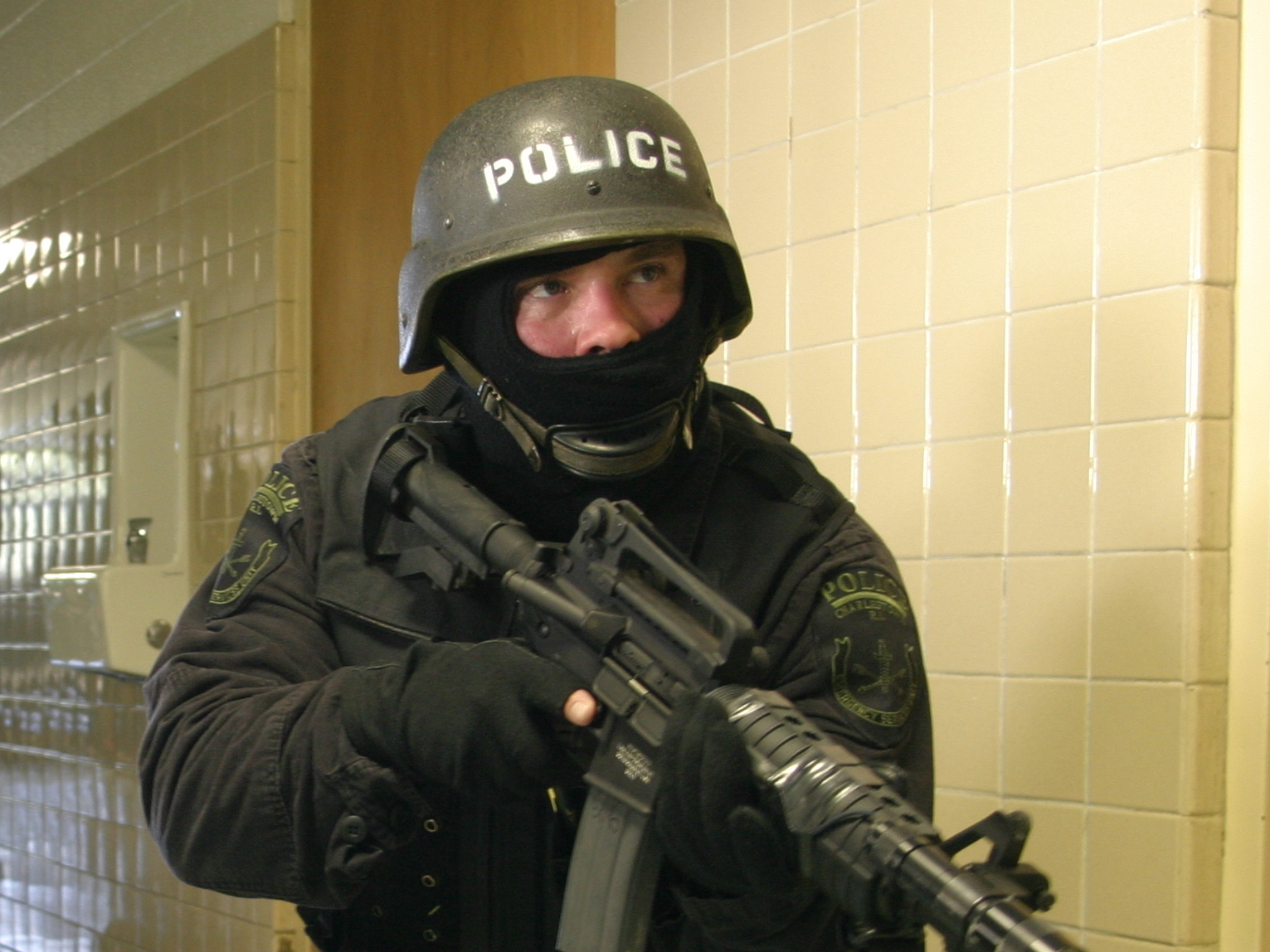• Shooting drills are sometimes held in the workplace, as a means of preparing workers for violent attacks.
• But security expert Laurence Barton argues that some drills can instill a false sense of security or promote problematic crisis management strategies.
• He argued that increasing peoples’ “situational awareness” and telling employees to trust their intuition is far more helpful than running through a tactical drill.
Shooting drills in the workplace are intended to help people prepare for the unthinkable.
With gun violence dominating national conversation in the US, it's not surprising that a spate of crisis management and security firms have cropped up, promising to help train and educate employees and employers.
But some active shooter drills could be doing more harm than good, according to threat management and workplace violence expert Dr. Laurence Barton.
"It's well-intentioned, but there are also a lot of people making a lot of money right now on kind of a false sense of security," Barton told Business Insider. "The intention is a good one. But what's happening is we're placing false faith in these exercises."
Some numbers on workplace shootings
There were 500 homicides in the workplace in 2016, according to the Bureau of Labor Statistics. Of those homicides, 394 victims were intentionally shot and killed.
Additionally, a total of 792 injuries were intentionally inflicted on workers in 2016. That's a pretty big jump from 646 in 2015.
Those numbers may sound grim, but the takeaway is that an individual's odds of getting caught in a workplace shooting are quite low. Barton added that fist fights are still the most common form of violence in the office.
"The workplace remains a remarkably safe place," Barton said.
Still, multiple-victim shootings are on the rise, NPR reported. And the workplace isn't exempt from that bloodshed, whether it's wrought by current and former employees, individuals with a grudge against an organization, people with a familial connection to specific employees, or complete strangers.
• On Monday, a disgruntled video-maker shot and injured three people at YouTube's San Bruno headquarters.
• In March, a gunman stormed into an employee going away party at a veterans home where he'd reportedly been treated. He ultimately killed three hostages and himself.
• Last year, a United States Postal Service worker killed three colleagues with an assault pistol in San Francisco.
• A health inspector and his wife shot up an office holiday party in San Bernardino in 2015, killing 14 people. Some of the San Bernardino survivors reportedly thought the terrorist attack was a drill, at first.
• In 2012, a former Marine entered the Wisconsin spa and hair salon where his ex-wife worked, and fatally shot her and two other women.
So it's no mystery why some employers are taking proactive steps and arranging drills.
Tactical training can be useful - but not for civilians
Barton said active shooter drills that provide tactical training aren't terribly helpful for employees.
"You can't take tactical training and apply it to a civilian population," said Aric Mutchnick, president of risk management firm Experior Group, whose methods Barton recommends. "You'll never build the muscle memory. You'll never have the repetition of training that you need to get the benefit that you would get from a tactical training exercise."

Mutchnick said that, in most cases, tactical trainings or overly realistic active shooter drills simply scare people.
"I see no value in that," he said. "How will they be safer the next time? They'll react better? I doubt it. Because they've only done it once."
That being said, Barton noted that tactical trainings can be extremely useful for police. For companies weighing a tactical training session, he recommended inviting the local police force to run a drill over the weekend or during a time when employees aren't in the building.
Barton said that some active shooting drills - as well as company-wide crisis management methods - are simply "reckless." He faulted static strategies, like telling employees to evacuate the building and meet across the street at a McDonald's, in the event of an attack.
"What if there's a second shooter that takes people out now that they're in a predictable spot?" he said.
Because no two emergency scenarios ever play out the same, Barton said that active shooter trainings should instead encourage people to listen to their intuition. So, instead of being told to automatically regroup at McDonald's, a hypothetical employee should be told to run until he or she felt it was safe to stop.
Moving beyond 'run, hide, fight'
"Run, hide, fight" is the common term for the mass shooting survival strategy put forward by the US government. If you find yourself in an active shooting situation, you're supposed to run away. If escape is impossible, hiding is the next recommended option. And, finally, your last resort is attempting to incapacitate the attacker.
"'Run, hide, fight' is essentially the 'stop, drop, and roll' of active shooter training," said Mutchnick. "It's useful. It's good for the masses, in terms of overall training. But imagine walking into a building, looking at their fire management plan, opening the binder, and the only thing you see in there is 'stop, drop, and roll.' You would have concerns."
Mutchnick's firm organizes "red ball drills," which Barton recommended as a better alternative to disruptive and disconcerting tactical drills.
An Experior consultant carrying a red ball will enter a workplace. Employees who have received a memo about the drill are instructed to treat the red ball-carrier like an active shooter - although 911 calls must be simulated and aggression and fleeing the area are not allowed. Another consultant will walk through the scenario with the employee, and discuss options of dealing with the situation.
"I don't need to scare the hell out of everyone," Mutchnick said. "It's not a test; it's a conversation."
After conducting a number of red ball drills and discussing safety strategies with the participating employees, the Experior Group will compile a report based on its findings.
"Instead of being 100 pages of bull---- that no one's ever going to read, with all sorts of unique and beautiful graphs, it's a concise report that really is just bulleted observations and recommendations," Mutchnick said.
People should take steps to boost their 'situational awareness' at work
Barton said that the best active shooter training will encourage workers to increase their "situational awareness" at work.
"At work, we turn our intuitions down," he said. "That doesn't mean that we turn them off completely, but we turn it way, way, down."
Barton gave the example of a shopper heading to Target at night.
"The reality is if some sketchy character starts to approach me in the parking lot and I don't feel safe, I'm either going to go back into my car and lock it or I'm going to run into the store," he said. "I'm going to hustle. I'm not going to stand there and become a victim."

But that's often not the case at work.
"We have our coffee, we have the Outlook schedule for the day," Barton said. "We know who we're going to say hello to. We've got our meeting schedules."
The result is a sense of disbelief and paralysis when emergencies do happen. Barton said he's interviewed numerous survivors of workplace shootings. Many describe freezing up and not taking the opportunity to flee.
"They'll say, 'I can't believe that I stayed there. I knew there were gunshots, but I had such a sense of disbelief,'" he said. "Or, 'I thought someone was addressing it.' Or, 'I thought maybe it was firecrackers.' You just want to believe it's not what it is."
Barton said he doesn't advocate becoming paranoid, but added that becoming more "situationally aware" at work is key.
"Don't make any assumptions," Barton said. "I would rather that you move, get to the stairs, and get out of the building - I'd take that embarrassment anytime over being shot in the leg. Why would you risk that? And what would you tell your children?"
Have you ever witnessed or experienced violence in the workplace? Email [email protected].

